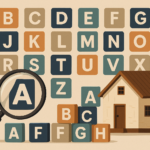
Key takeaways
Cotality’s latest Pain & Gain report reveals that 94.9% of property resales in the March 2025 quarter delivered a profit, holding firm on the December result, as total gross resale profits reached $31.7 billion.
The results reflect a housing market in transition, with profitability poised to rise further following February and May rate cuts, which have already reignited demand and lifted values 1.3% in the three months to May.
Sellers also made slightly smaller losses in the March quarter. Of the 5.1% of home sales that made a loss, the median was $44,000, down from $45,000 in the December quarter.
Gross profits from resale in the March quarter are estimated to be $31.7 billion, down from $36.6 billion in the December quarter.
The rate of profit-making resales was once again higher across the regions (96.5%) than in capital cities (93.9%).
Houses continued to outperform units in the March 2025 quarter, with 97.2% of house resales delivering a profit, compared to 90.1% of unit sales.
Cotality's latest Pain & Gain report shows 86,000 dwellings resold across Australia in the March quarter of 2025.
The analysis revealed that 94.9% of property resales in the March 2025 quarter delivered a profit, and total gross resale profits reached $31.7 billion.
The results reflect a housing market in transition, with profitability poised to rise further following February and May rate cuts, which have already reignited demand and lifted values 1.3% in the three months to May.

The report, based on data from the March quarter of 2025, analysed 86,000 resales over the period, showing the median nominal gain of $305,000.
This was down from $310,000 in the previous quarter – marking the first financial quarter since March 2023 that median nominal gains have fallen.
Although profitability held steady in early 2025, we’re seeing clear signs of renewed momentum.
With rate reductions now flowing through to buyer demand and value growth, we expect stronger resale returns in the months ahead.
Profit-making resales closely followed home value trends, with profitability dipping slightly as prices softened late last year.
But that pullback has already reversed.
Along with a small drop in the median profit, sellers also made slightly smaller losses in the quarter.
Of the 5.1% of home sales that made a loss, the median loss was $44,000, down from $45,000 in the previous quarter.
Total losses reached $258 million, down from $298 million in the previous quarter and $270 million in the March quarter of 2024.
Houses dominate resale gains as units lead losses
House resales continued to outperform units in the March quarter, with 97.2% of house sales proving profitable, compared to 90.1% for units.

The median resale gain for houses was $355,000 - 73% higher than the $205,000 gain for units.
Of the 86,363 resales analysed, 5.1% sold for less than their previous purchase price (just under 4,400 properties).
Units made up a disproportionately large share, accounting for 62.6% of all loss-making sales.
This aligns with a persistent underperformance in the unit sector: over the decade to March 2025, national house values rose 80.2%, more than twice the 37.7% gain in unit values.
This could be attributed to a number of unit markets being weighed down by oversupply and weak growth.
Several large apartment markets that saw a building boom in the late 2010s have yet to recover materially.
Notably, more than one in four unit resales that made a loss occurred in just four LGAs (Melbourne, Parramatta, Port Phillip, and Stonnington) where nominal unit values have grown by just 2.0% on average over the past decade.
Interestingly, despite the wide gap in gains, the median loss was nearly identical.
The median loss was -$45,000 for houses and -$44,000 for units.
Short-term resales rise amid rate cycle shift
The national median hold period for resales was 8.8 years, consistent with a long-term trend towards holding property for extended periods.
However, there was a small increase in short-term resales, with properties held two to four years making up the largest share at 15.6% of transactions.
These short-term sales may reflect fixed-term borrowers exiting during a rising interest rate environment.
This cohort had a higher rate of loss, which is unsurprising given the market downturn that followed rate hikes from 2022.
Regional resilience and lifestyle market gains
Regional Australia once again outperformed the capitals, with 96.5% of resales yielding a profit - compared to 93.9% in capital cities.
This regional strength was underpinned by long-term capital growth and strong pandemic-era demand.
Regional lifestyle markets recorded some of the nation’s most significant profit uplifts over the past five years.
The outsized gains reflect not just price growth, but the enduring appeal of lifestyle locations through and beyond the pandemic.
In Noosa, Busselton and the Sunshine Coast, resale profits exceeded $400,000 in the March quarter up substantially from 2020.
Noosa had the biggest uplift in median profit, from $239,000 in March 2020 to $617,500 in March 2025.
Across the capital cities
- Brisbane claimed the top spot for profit-making resales in Australia, with almost all resales making a nominal gain (99.7%).
- Adelaide recorded the second-highest rate of profit-making resales in the March 2025 quarter, with 9% of transactions delivering a nominal gain. Adelaide overtook Sydney for the highest median nominal gain from dwelling resales among capital cities in the March quarter, a title held in Sydney since August 2014.
- Perth recorded the third-highest rate of profit-making dwelling sales in the March quarter, with 9% of resales achieving a nominal gain. This marked a 20 basis point increase from the previous quarter.
- Sydney saw the third-lowest rate of profit-making sales across the capital cities behind Darwin and Melbourne but still saw over 90% of resales make a nominal profit (92.3% of resales in the quarter). This was a slight dip from 92.5% in the previous quarter.
- Melbourne recorded the second-highest rate of loss-making resales of the cities behind Darwin in the March 2025 quarter, at 11.3%. Aside from the 12.0% result in the three months to February, this was the highest rate recorded since the late 1990s.
- Hobart maintained a high rate of profitability in the March 2025 quarter, with 94.5% of resales achieving a nominal gain, but this was down from 3% in the previous quarter.
- In Canberra, the rate of profit-making sales rose by 130 basis points in the March quarter, lifting from 93.4% to 94.5%.
- Darwin posted the highest rate of loss-making resales, with 2% of sales recording a nominal loss in the March quarter. However, it also had the biggest improvement of the capital cities, with the rate of loss falling around 240 basis points in the quarter.
Key findings for Pain & Gain, March Quarter 2025
- The portion of profit-making sales nationally was 94.9%. This was steady on the December result, which revised up slightly from the previous edition of this report.
- Despite the share of profitability remaining stable, there was a slight drop in the median nominal gain. The median profit nationally was $305,000, down from $310,000 in the previous quarter. This marks the first financial quarter since March 2023 that median nominal gains fell.
- Sellers made slightly smaller losses in the March quarter. Of the 5.1% of home sales that made a loss, the median was $44,000, down from $45,000 in the December quarter.
- Gross profits from resale in the March quarter are estimated to be $31.7 billion, down from $36.6 billion in the December quarter, but up from $30.2 billion in the March quarter of 2024.
- Brisbane claimed the top-spot for profit-making resales in Australia, with almost all resales making a nominal gain (99.7%).
- Melbourne was one of two capital cities (alongside Darwin) that had a profit-making sales rate of less than 90% in the March quarter. The share of profit-making sales was 88.7% in Melbourne, and 73.8% in Darwin.
- Adelaide overtook Sydney for the highest median nominal gain from dwelling resales among capital cities in the March quarter, a title held in Sydney since August 2014. The median result from resale in Adelaide was $385,000 in the quarter.
- Houses were far less likely to see a loss than units, with only 2.8% of houses selling for less than the previous price.
- Units had a loss-making sales rate of 9.9% in the quarter, though this improved slightly from 10.1% in the December quarter.
- The share of profit-making sales moves with the trend in home value changes. As housing markets have seen an upswing through the start of the year, the rate of profit-making sales is expected to shift higher in 2025.














